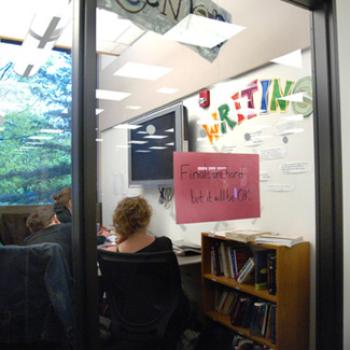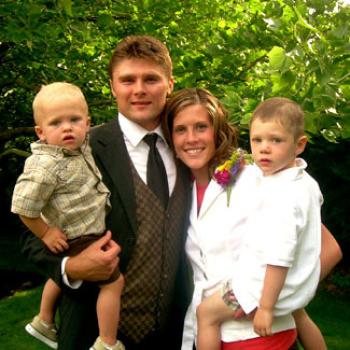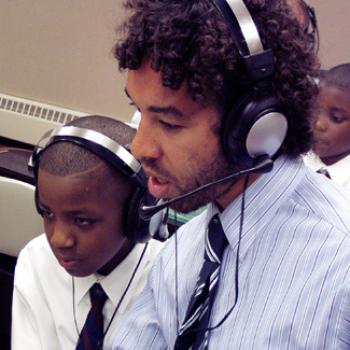On learning to be a writing tutor
Sean Nagamatsu ’07
“It was not simply a course in how one tutors. It was an exploration of writing as a catalytic form of expression and interaction. It was the complete taking apart of how I put together words and the subsequent attempt at putting myself back together afterwards. ”

It’s been three plus years, but I still remember the Spring of my sophomore year at Oberlin as one of the most deconstructive experiences of my life. Stories don’t come out singular and regurgitated anymore, but rather in bits-and-pieces, pastiche, free-form, stream of consciousness, topic-associative, or whatever word referent framework you have right now. I can trace this aspect of my (questionable) story-telling abilities throughout my life, but the without-a-doubt catalyst was learning to be a writing tutor, or “associate” as we sometimes like to call ourselves, during the Spring of my sophomore year.
I remember sitting in the grass a whole lot, in North Quad, in Wilder Bowl. Pulling at the icy blades and watching planes move silently overhead, wondering if it was too cold to be sitting in the grass, and thinking about writing. See, learning to be a writing tutor was not simply a course in how one tutors. It was an exploration of writing as a catalytic form of expression and interaction. It was the complete taking apart of how I put together words and the subsequent attempt at putting myself back together afterwards. I remember writing a twenty-two page paper that was supposed to only be five pages. I just couldn’t get the words right.
It was essential to my growth. I trace things I do now to things I began to learn then. I’m still talking about Paulo Freire in grad courses and wrestling with process versus product in the 9th grade English class I teach. It was this idea that showed me there were no right words, only words that more effectively illuminate your thoughts and your movement through them. It was the open dialogue engendered in a Rice room underground and streaming with light. It was a dozen different experiences. It was sitting in Oberlin High School talking to reticent teens or, in their absence, picking up a copy of Ellison’s Invisible Man for the first time. I wrote my senior tutorial piece on that book. It was the joy of finding light where there was darkness in the face of a first year who I connected with in the Mudd Writing Center. It was the joy of him coming back again and again to associate with other writers, to test out his freshest thoughts. It was the immersion into the world of words that I had only began to grasp at that point.
Becoming a writing tutor/associate opened so many doors for me. Usually that expression is used to describe associations that help get you into inner circles, help get you the right contacts. This experience was one that opened doors inside me. I became more and more aware of the throbbing world of words in which we are all immersed. Though opening myself up so thoroughly was sometimes painful--I never did get that twenty-two pager down to five--I could not be doing the things I am doing today without it. I opened myself up to a world of possibilities, a world that was always there but one that I hadn’t seen as fully before. Now, here, I continually strive to see that world with eyes as wide as possible. Sometimes it is more than I can bear. Still, it has been the essential lesson Oberlin allowed me to learn. I hope with every word at my disposal that each Oberlin student can find such an illuminating, enriching set of experiences, whatever the venue. One’s time cannot be complete without it.
Tags:
You may also like

On embracing writing
“Oberlin revolutionized the way I think about writing - which in turn shaped me not just as a learner but also as an individual.”
Anna Zeemont ’13

On opportunity
“I spent many years grappling with what type of profession I wanted to pursue in my life. I considered medicine, legal work, and many other paths. But one thing always remained the same: my passion...
Chase Palmer ’08

Contributed by Prof. Laurie McMillin
“Jabali left Oberlin in 2000 with a degree in Biology and no set plans. But he knew he wanted to teach... At the age of 27, he became the principal of Excellence Charter School in Bedford Stuyvesant...
Jabali Sawicki ’00